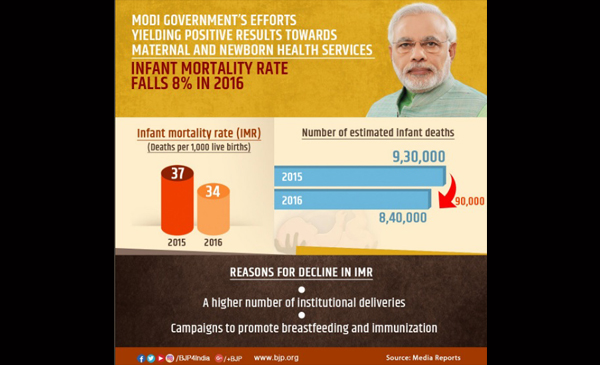
India's infant mortality rate (IMR) recorded an 8% decline in 2016, its sharpest fall since 2010, government data released last month showed. The government attributed the fall to a higher number of institutional deliveries and campaigns to promote breastfeeding and immunization.
In this fact file we analyse where India has succeeded and where it needs to do more to save its infants.
The infant mortality rate or number of deaths per 1000 live births before a child reaches the age of one, fell to 34 in 2016 from 37 in 2015, according to sample registration survey. Since IMR tracks infant deaths, the lower the IMR the better.
Estimated infant deaths fell to 8.4 lakhs in 2016 from 9.3 lakhs in 2015, according to a PIB release dated September 29, 2017.
Though IMR has been decreasing consistently, an 8% decline in 2016 is the steepest fall recorded since 2010.

Source: Sample Registration Survey
Madhya Pradesh has the worst IMR while Goa has the best
Madhya Pradesh fared poorly with an IMR of 47 deaths per 1000 live births, the worst in the country, followed by Odisha (44), Assam (44) and Uttar Pradesh (43) in the year 2016.
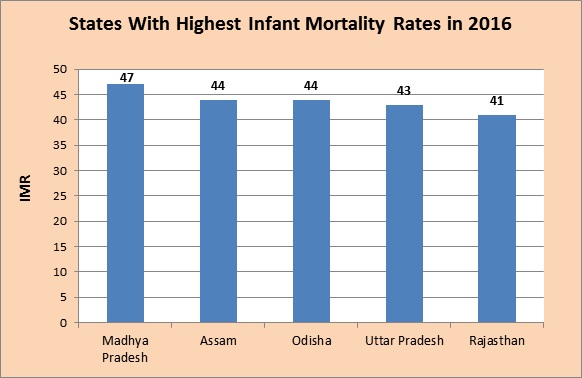
Source: Sample Registration Survey
Goa recorded the best IMR of 8 followed by Puducherry (10), Kerala (10) and Manipur (11) in the year 2016.
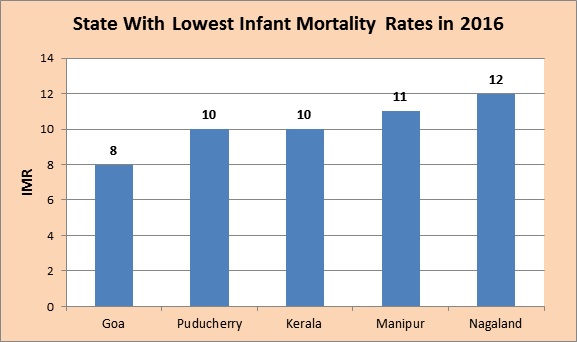
Source: Sample Registration Survey
10 out of 36 states and union territories in India have IMR above the national average of 34 in 2016.
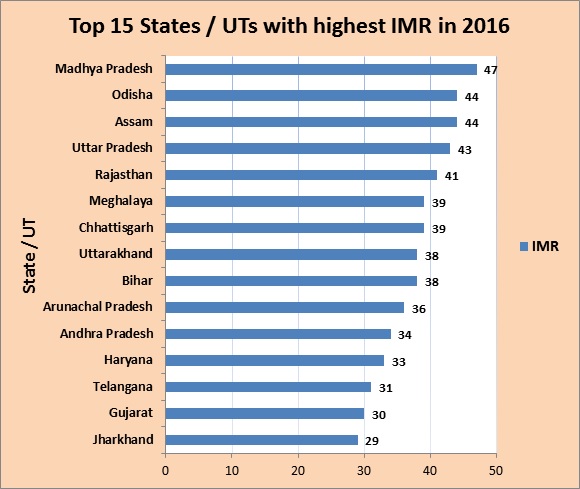
Source: Sample Registration Survey
The rural–urban divide in IMR has decreased, but slowly
Despite the declining trend in IMR, the urban–rural divide still exists. In 2016, 38 infants died per 1000 live births in rural India against 23 in urban India.
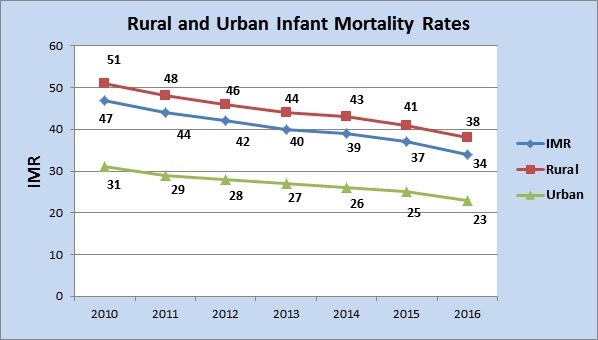
Source: Sample Registration Survey
That means there were 15 more deaths (38-23) in rural India against urban India per 1000 live births in 2016, while the corresponding number was 16 in 2015 and 17 in 2014.
While 33 male infants died, 36 of their female counterparts died per 1000 live births in 2016.
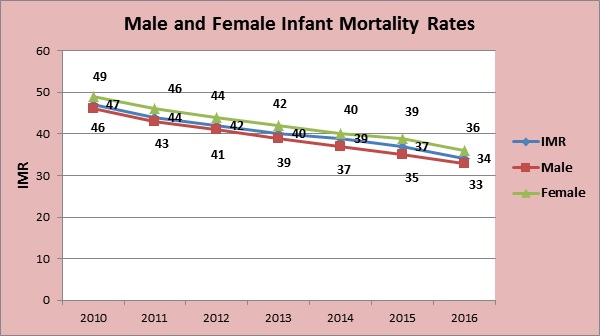
Source: Sample Registration Survey
India’s IMR is worst among BRICS
India fares poorly with a high IMR of 37 when compared to other BRICS nations, as per 2015 data from the World Bank.

Source : World Bank – Data of 2015
India stands 6th in IMR when compared to SAARC (South Asian Association for Regional Cooperation) countries as shown below.
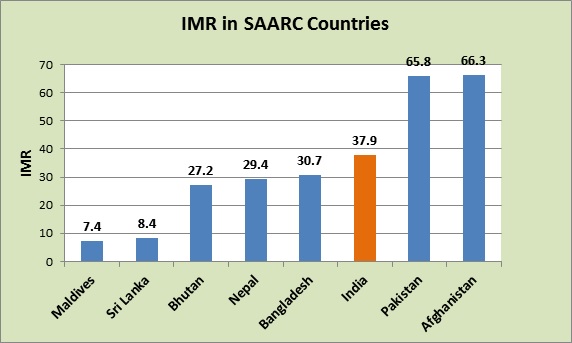
Source : World Bank – Data of 2015
India missed its Millennium Development Goal (MDG) of achieving an IMR of 29 by 2015.
India has set a target of reaching an IMR of 28 by 2019, as per the National Health Policy 2017.